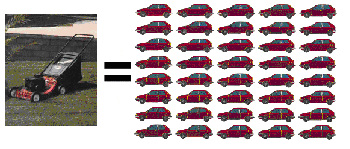The most obvious benefit of conservation design is the positive impact on stormwater quality and quantity. All the principles of conservation design contribute to improving this indicator. Site design that "clusters" lots together, leaving larger continuous open space, allows for natural drainage and cleansing of stormwater before it is introduced to conventional infrastructure. By design, more environmentally sensitive areas can be left undeveloped, as open space. This can include isolated streams, wetlands, high quality woodlands and prairies. Cluster design is most often seen in suburban or rural settings (The Nature Conservancy and Chicago Wilderness).
Natural landscaping can improve stormwater quality and quantity because of its deeper root system. Deep root systems stabilize the surrounding dirt which helps minimize erosion and sedimentation into waterways increasing water quality while also increasing the permeability of compacted soils. Healthy soil can hold more stormwater runoff, thus diverting it from the sewer systems while recharging the aquifer (NIPC, 2004). In addition deeper root systems require less water to maintain a healthy growth. Natural landscaping also uses less pesticides and fertilizers (NIPC, 2003). The U.S. EPA estimates that nearly 70 million pounds of active pesticides ingredients are applied to urban lawns each year with an average acre of lawn receiving 5-7 pounds of pesticides annually (The Stormwater Manager's Resource Center). These pesticides often find their way into waterways potentially through urban runoff or groundwater infiltration (NIPC, 2004). For more information visit: http://www.epa.gov/pesticides/
Reducing impervious surface areas also improves stormwater quality and quantity. When precipitation falls on parking lots, rooftops, streets and sidewalks instead of soaking into the ground at the point of impact, the water is diverted into a sewer system. En route to the sewer system, the runoff or discarded precipitation picks up pollutants, including car oil and gas as well as debris in the path of the runoff, compromising water quality (NIPC, 2003).
Incorrectly designed impervious surfaces can cause flooding and stream channel erosion. In bigger storm events, the quantity of stormwater can also be a problem. Large amounts of water rush into the sewer and natural water systems overwhelming their capacity. If there is less impervious surface, there is less runoff to be managed and a reduced quantity of water to be diverted into these systems. Reduced runoff into the sewer systems saves energy due to decreased pumping and treatment (NIPC, 2004). Conservation design helps alleviate these issues by promoting narrower streets, reduced driveway length, green roofs, and alternative walkway and parking lot design, and promotes the use of permeable pavement and pavers that allow water to pass into the ground onsite (NIPC, 2004).
Lastly, implementing sustainable stormwater management techniques will have a positive effect on stormwater quality and quantity. These techniques are similar to those used to reduce impervious surface and include green roofs, bioswales, rain gardens, native landscaping and naturalized detention basins (The Nature Conservancy and Chicago Wilderness). On a larger scale, developments can tie all these techniques together in what is called an urban runoff mitigation plan. An urban runoff mitigation plan is a permanent structural solution to managing the maximum amount of stormwater onsite (NIPC, 2004). All of these techniques address water quality and quantity in some form.
(See also Stormwater Best Management Practices.)
